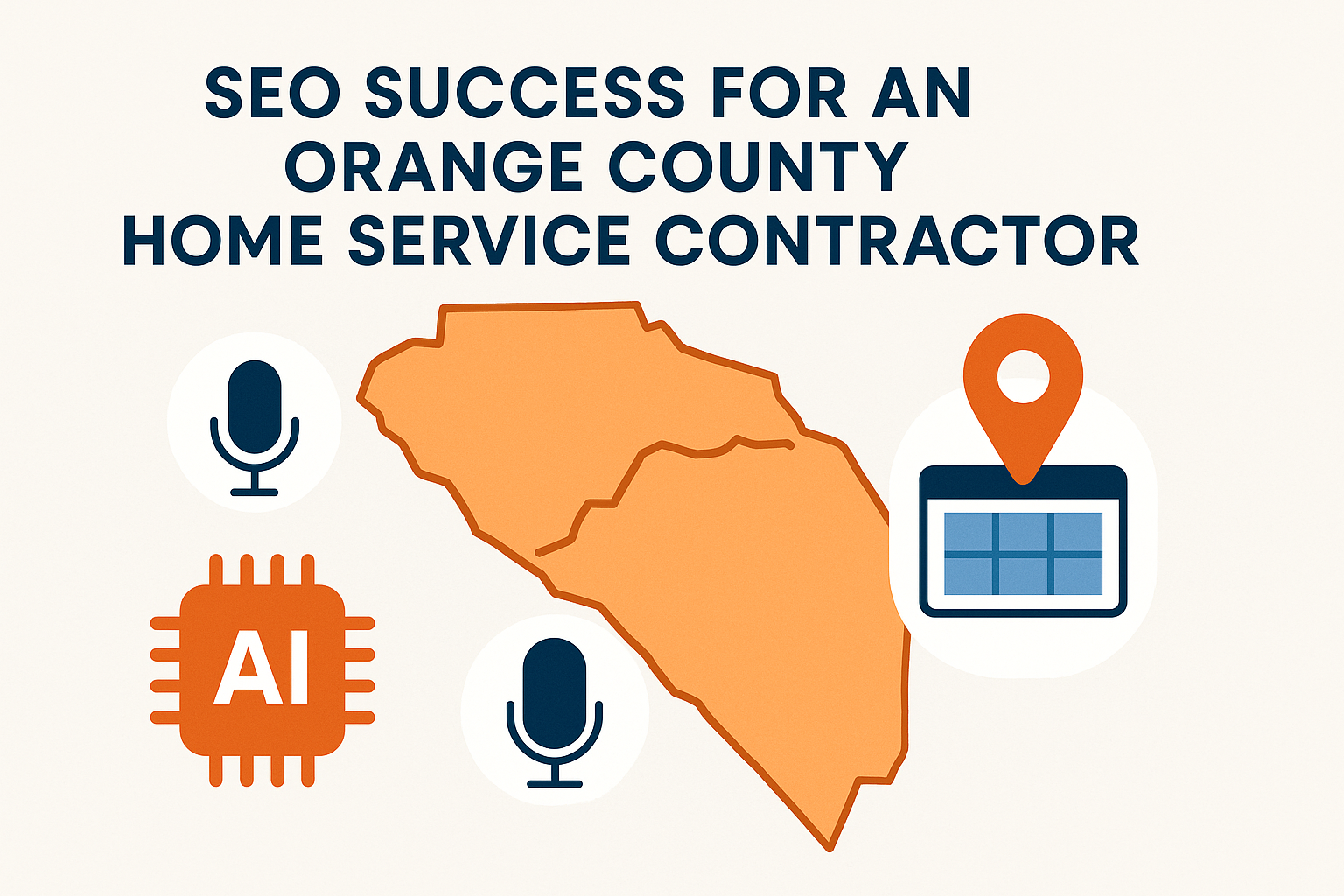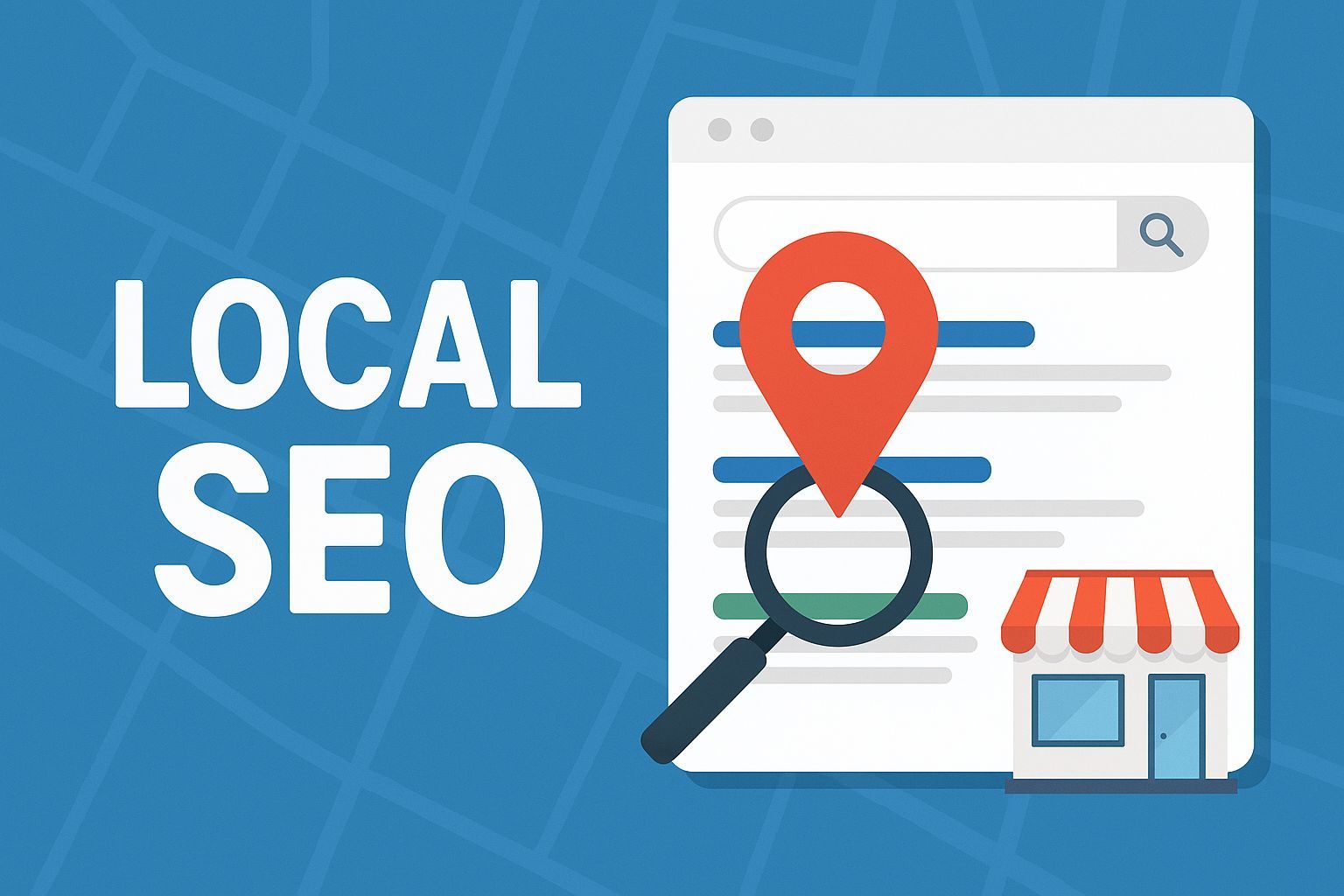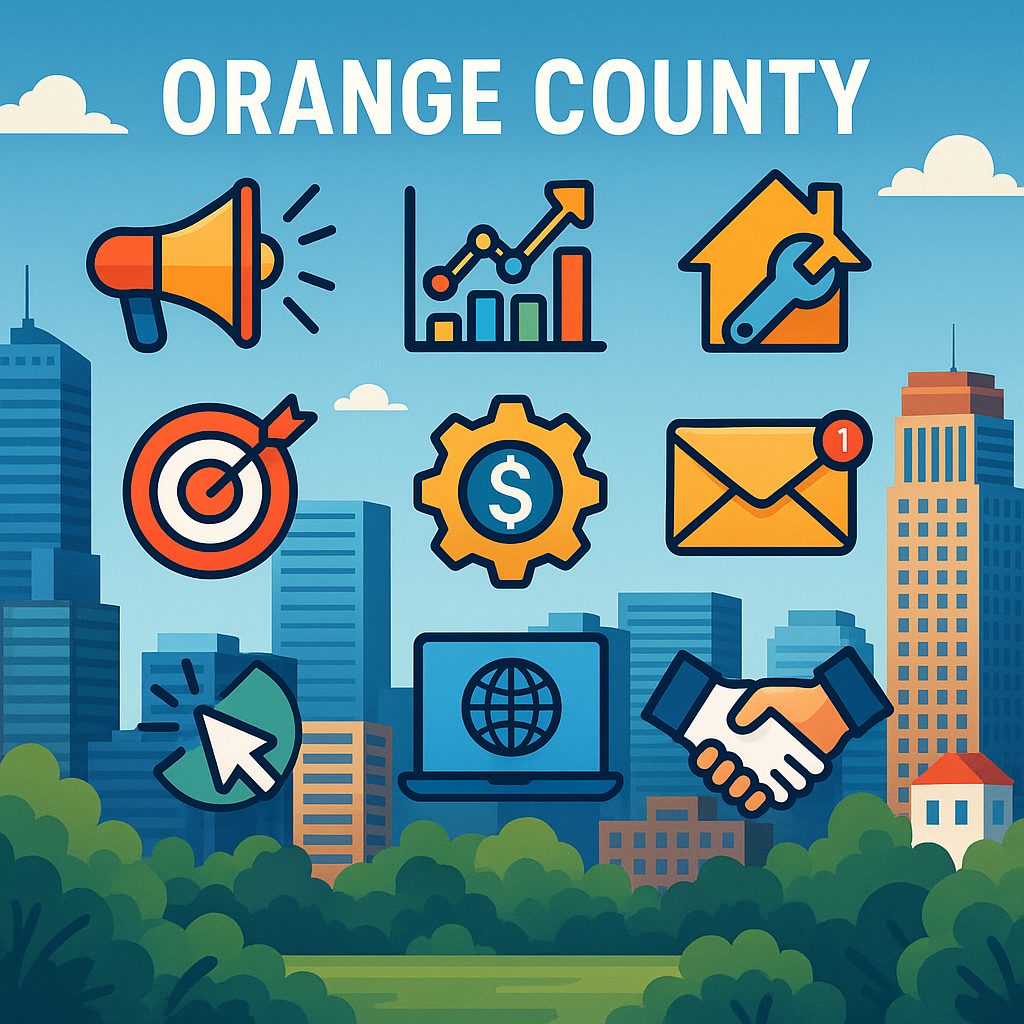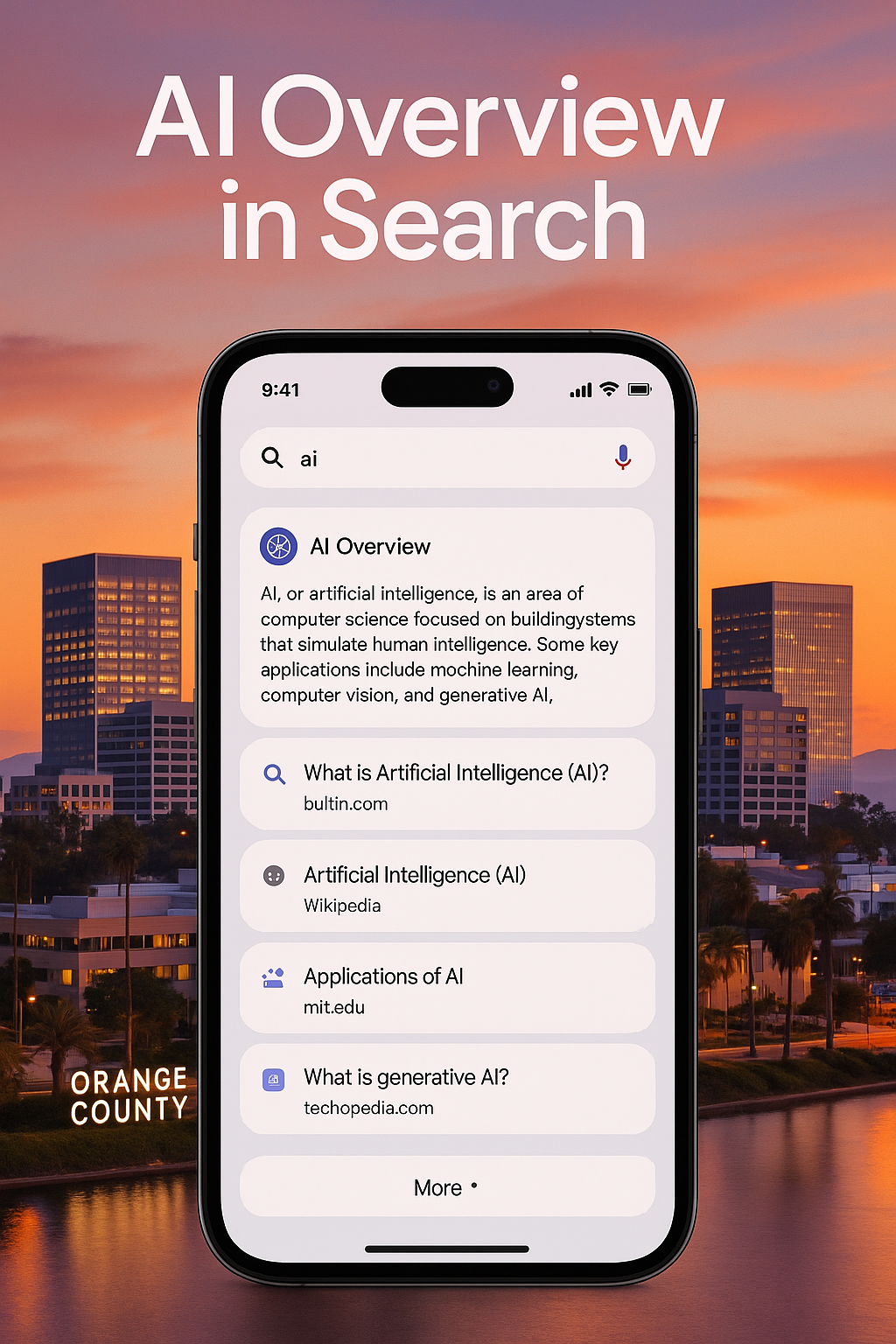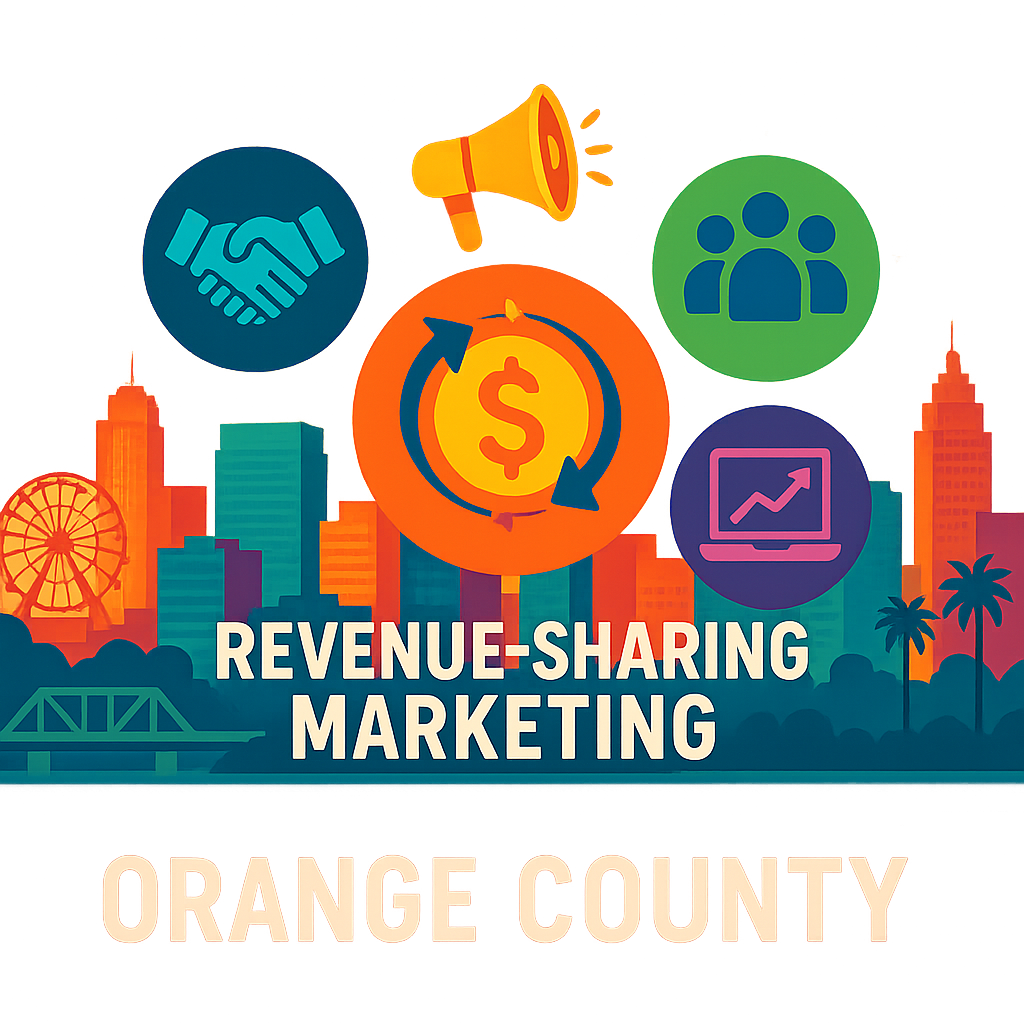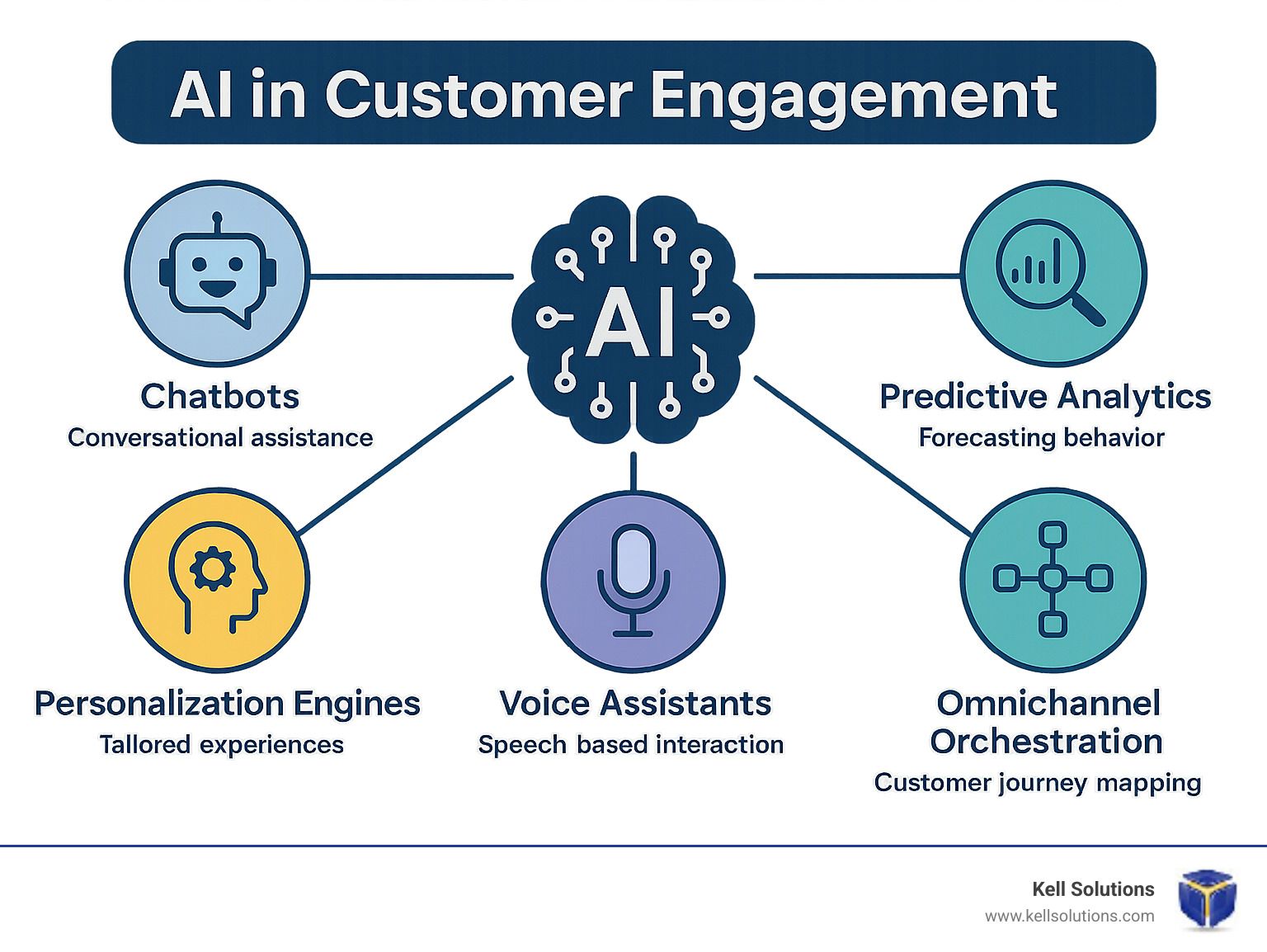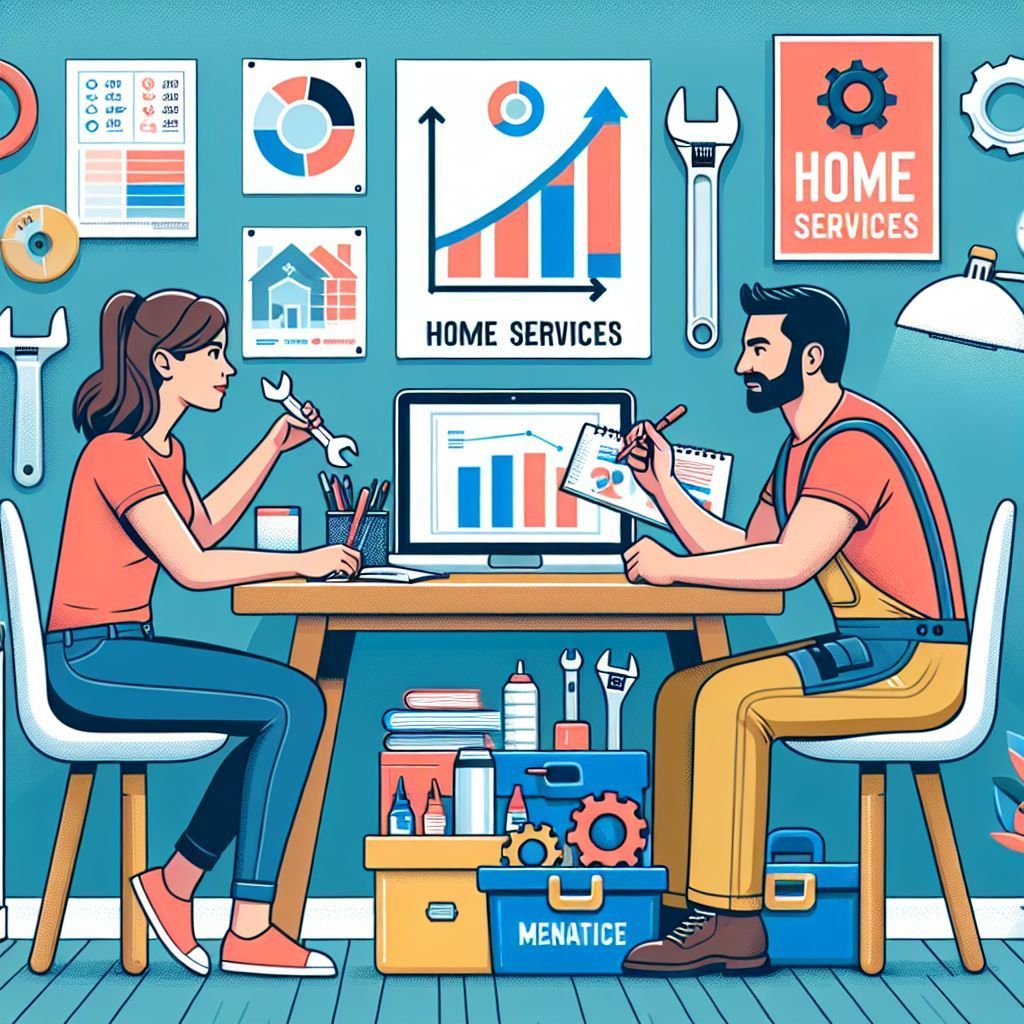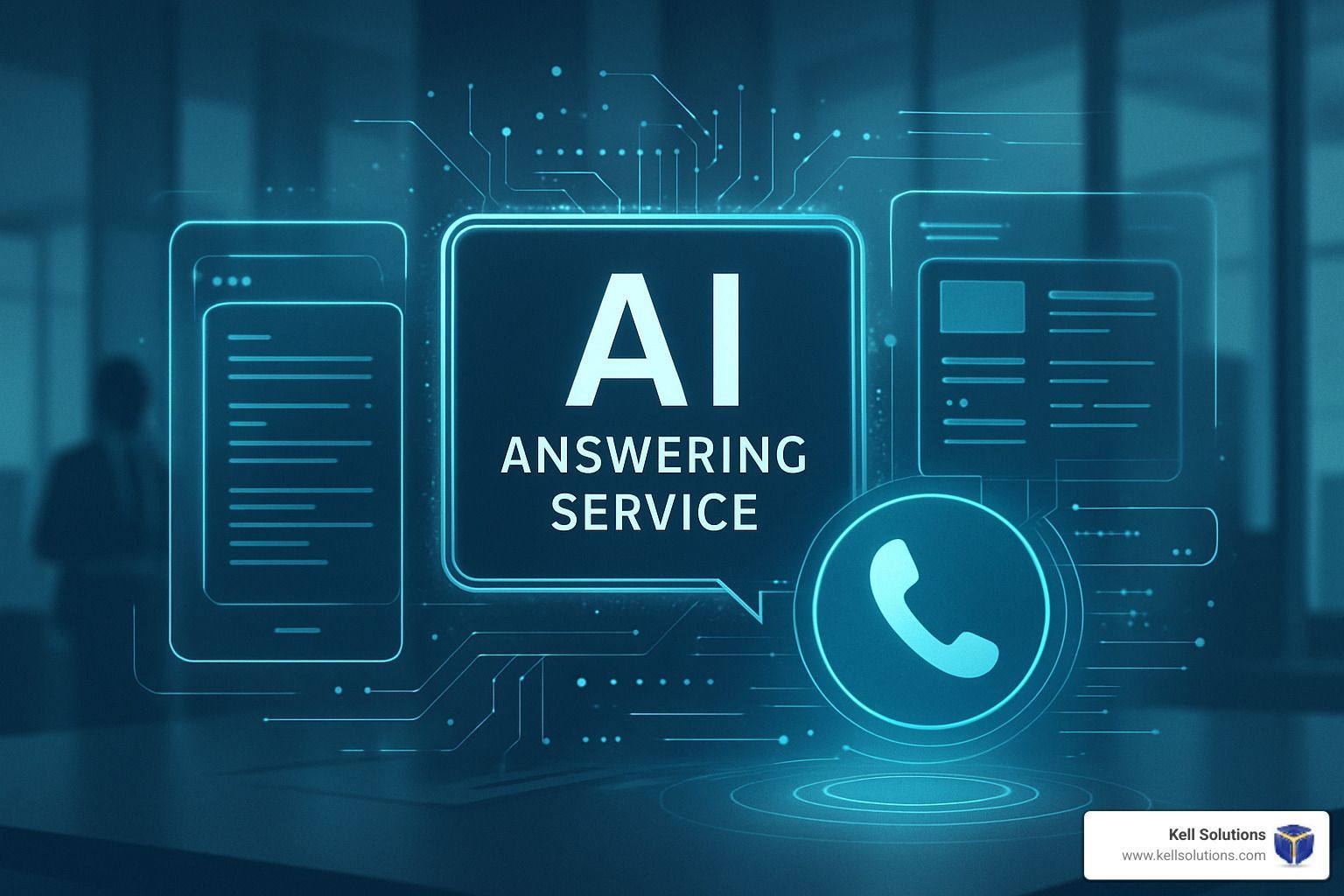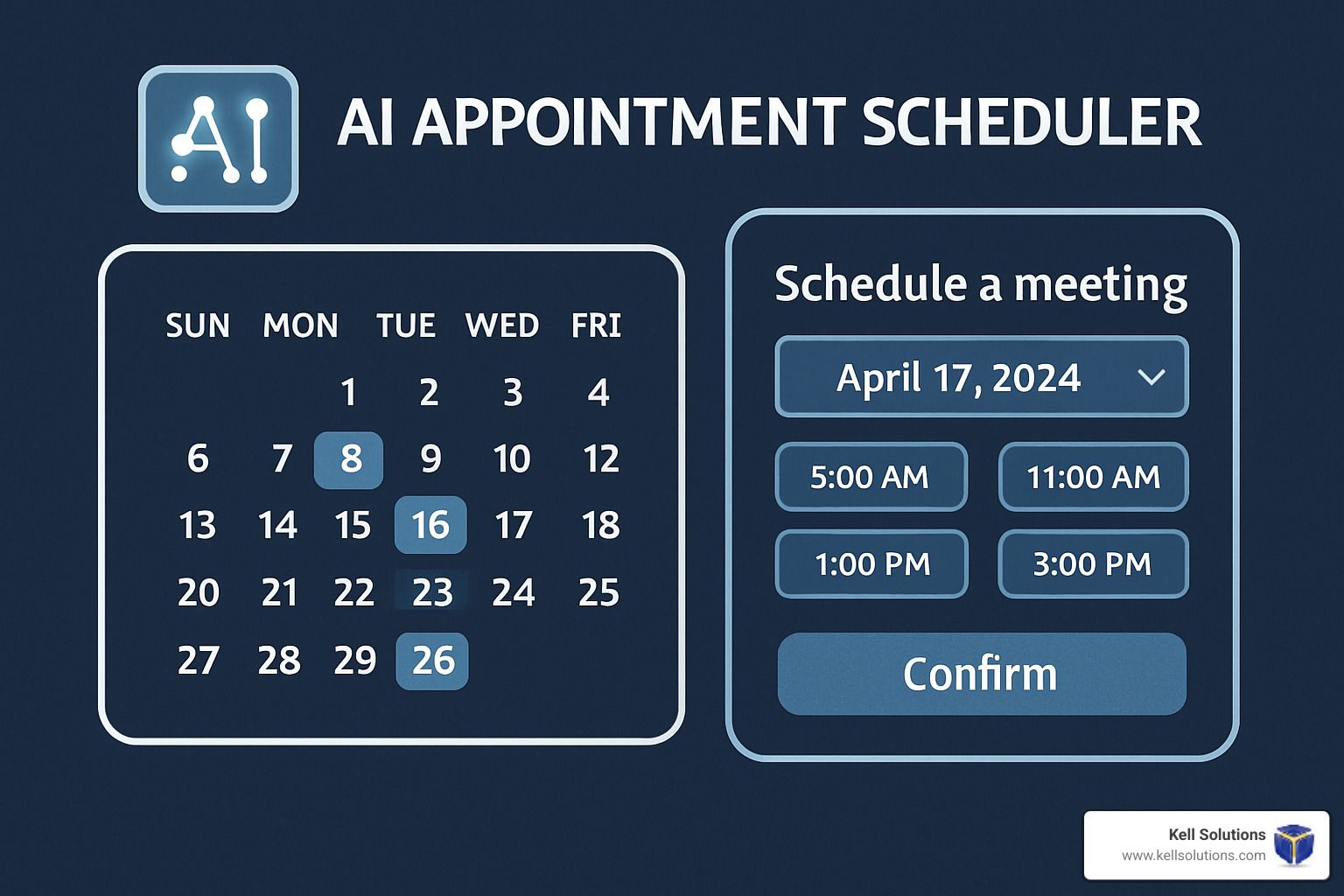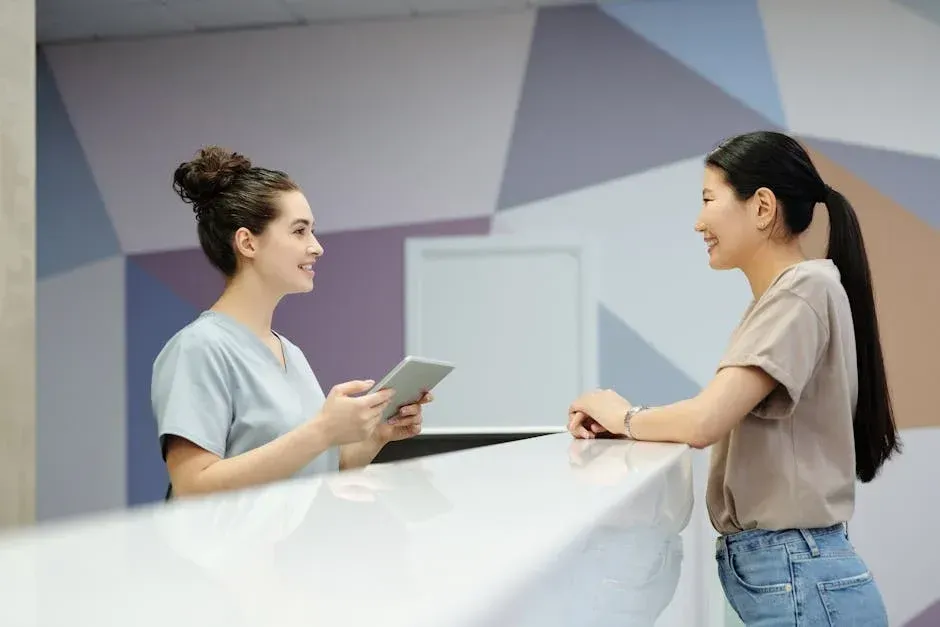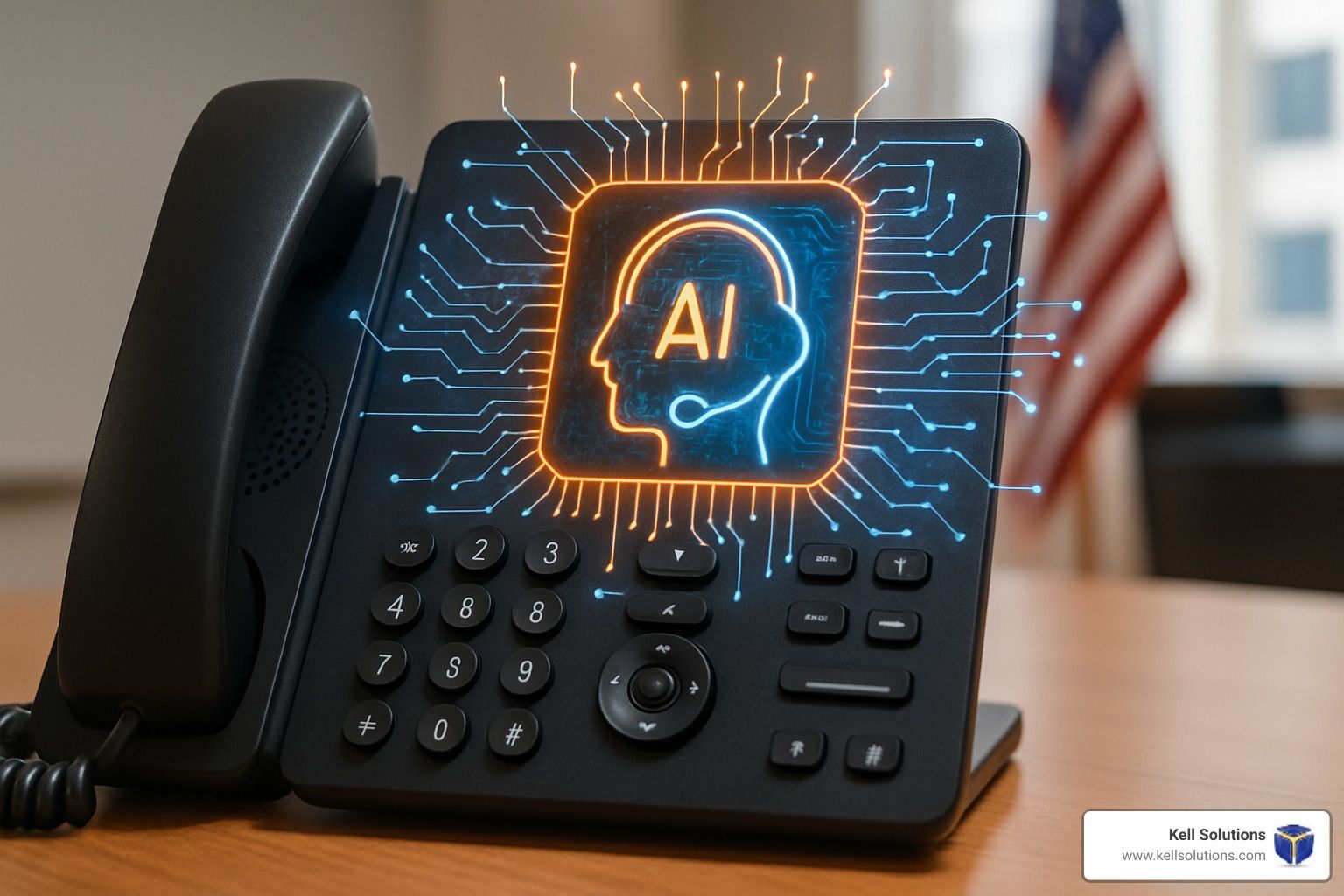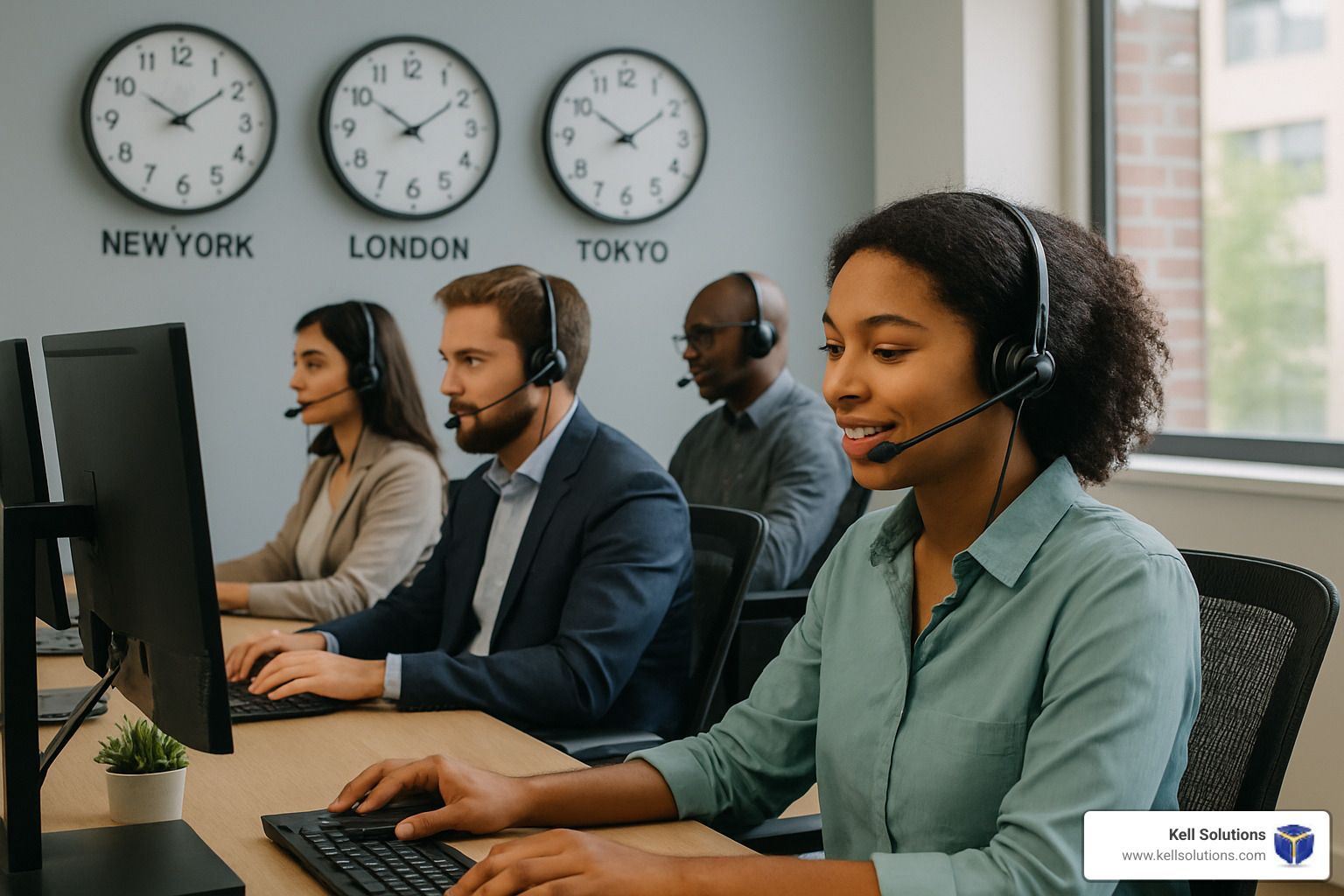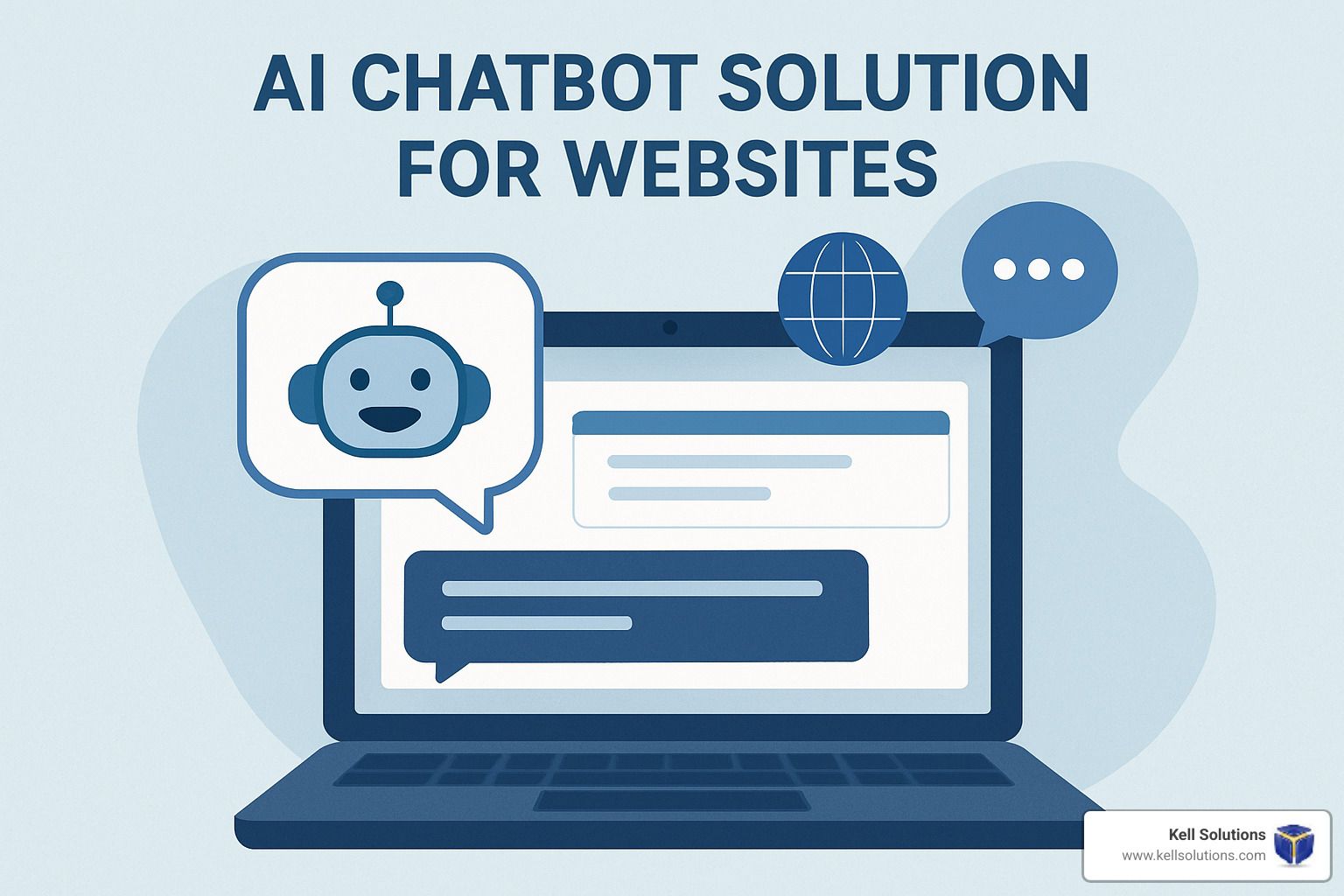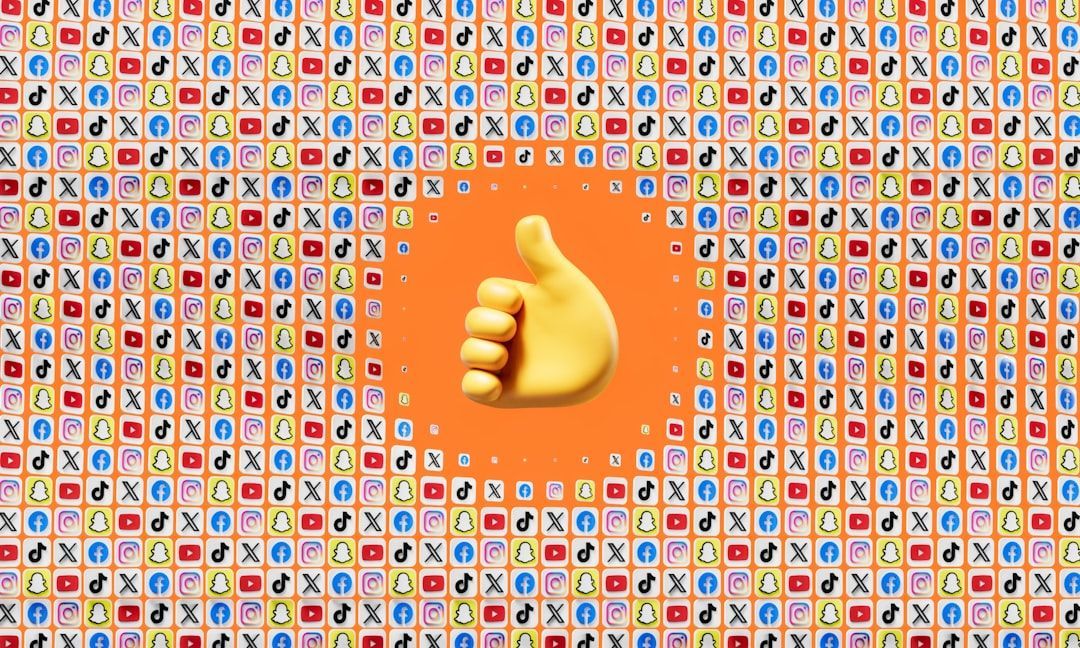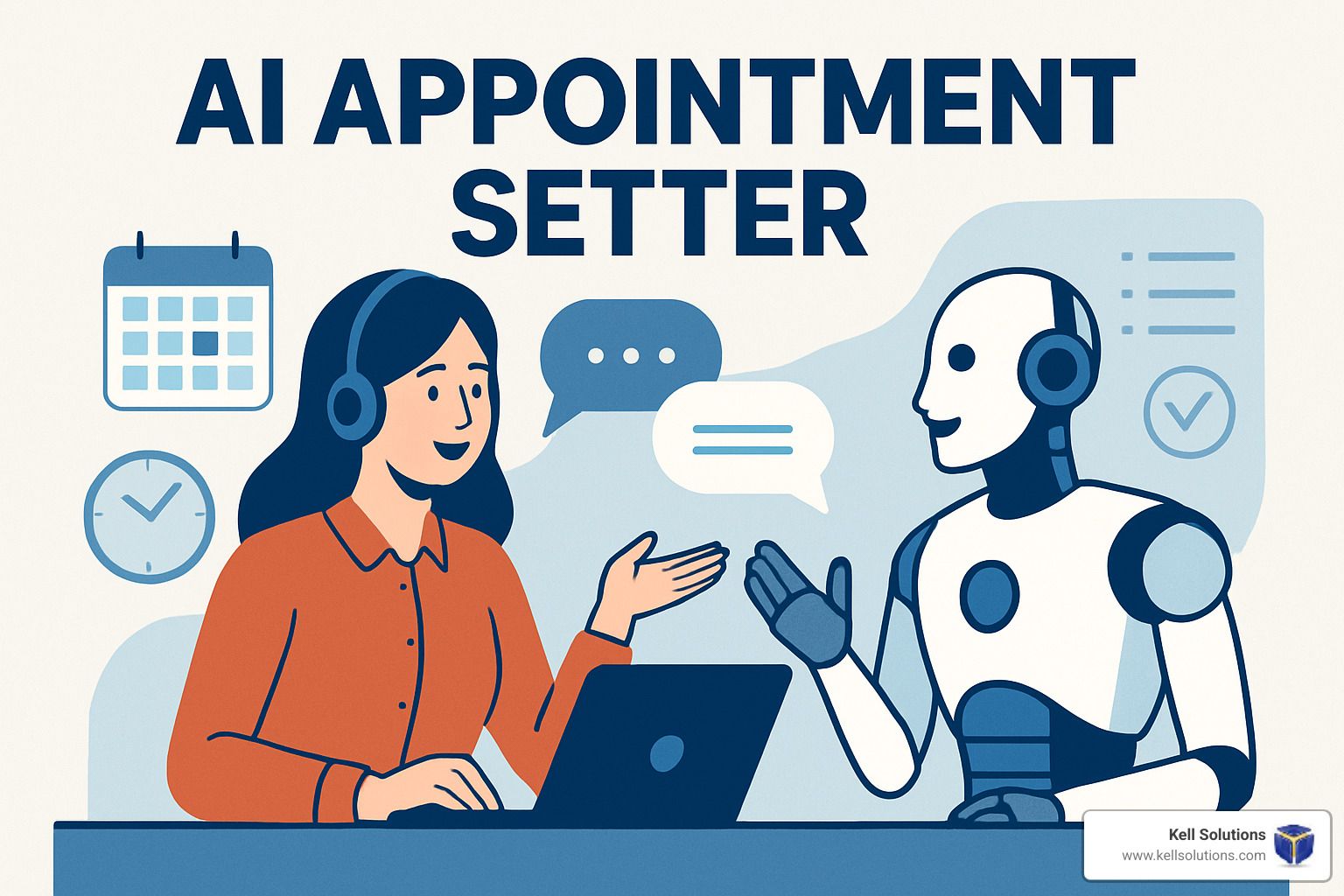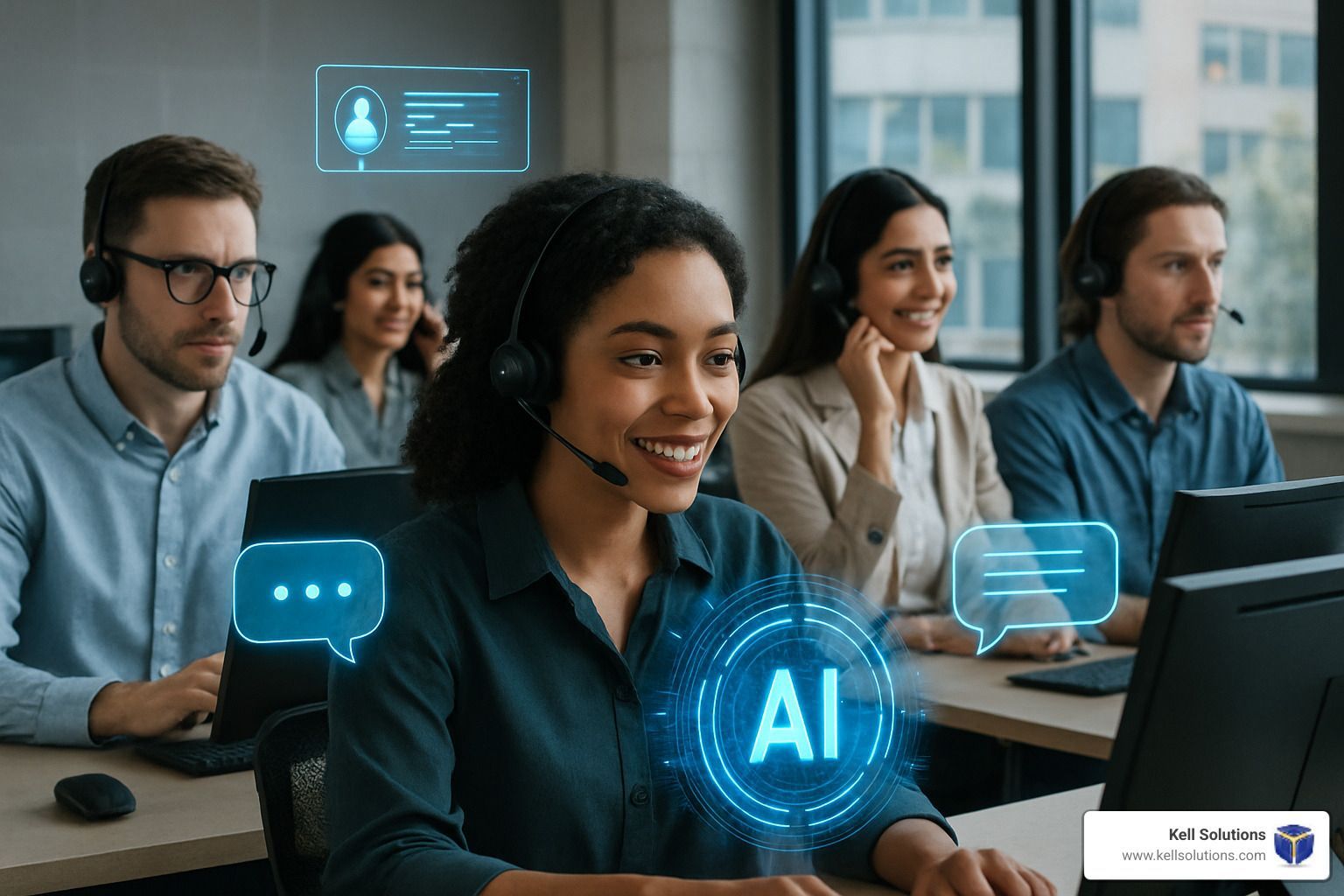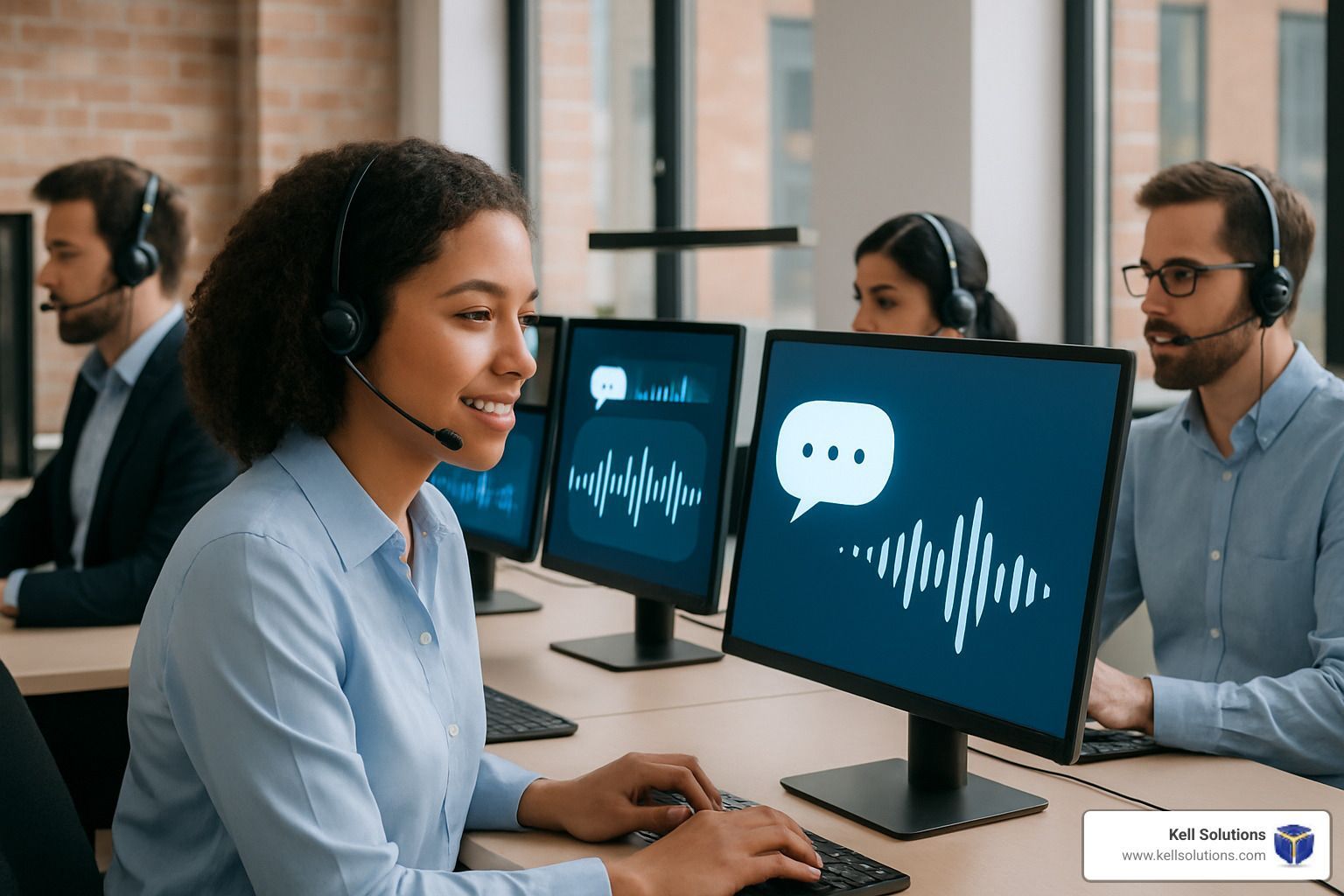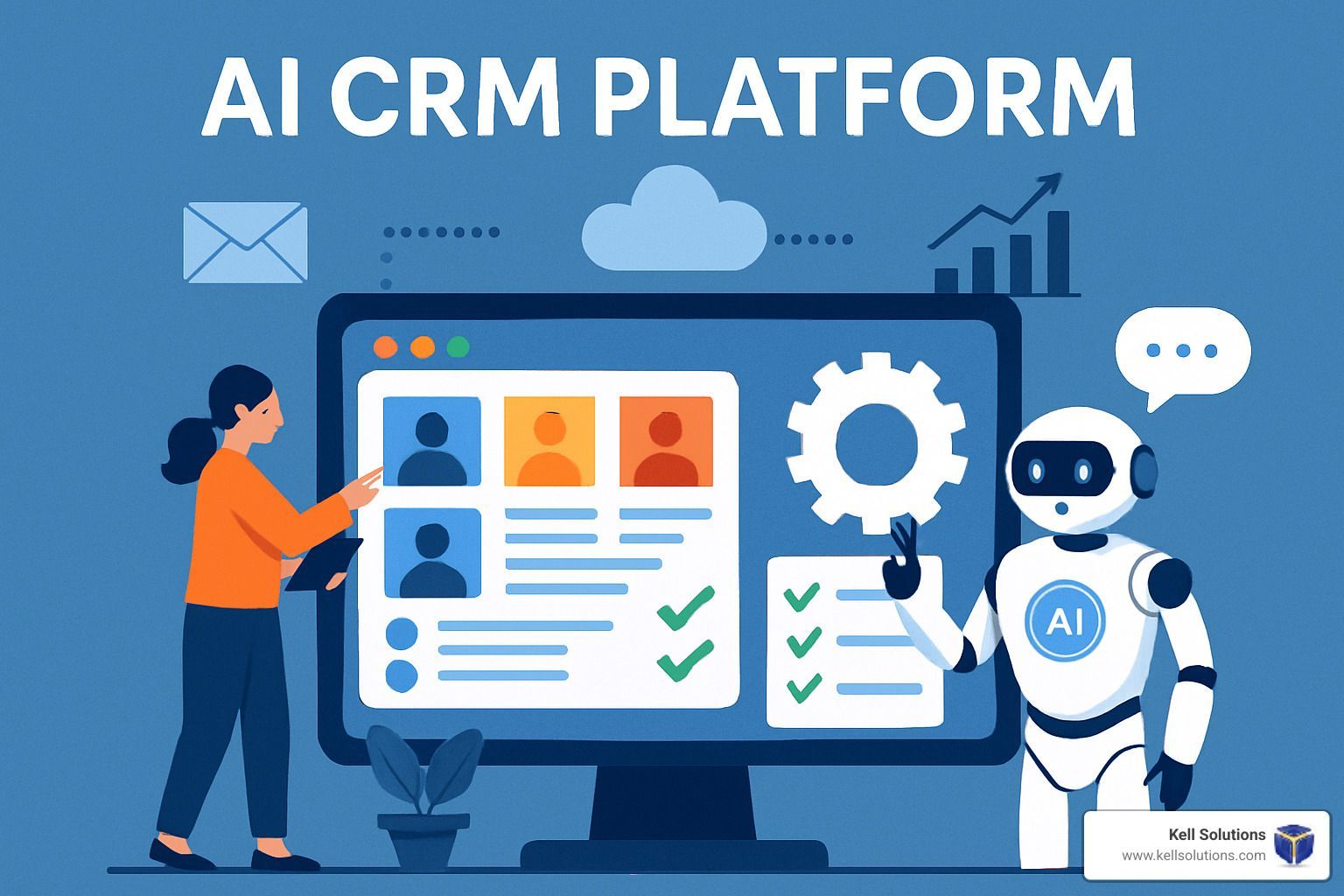Virtual Medical Receptionists – Just What the Doctor Ordered
Why Modern Medical Practices Are Embracing Virtual Reception Solutions
Virtual receptionist services medical practices rely on are changing how healthcare providers manage patient communications, appointment scheduling, and front-desk operations. These services combine live human agents with AI-powered technology to handle calls 24/7, ensuring no patient inquiry goes unanswered.
Quick Overview: Virtual Medical Receptionist Services
- 24/7 call answering with HIPAA-compliant live agents
- Appointment scheduling directly into your practice management system
- Insurance verification and patient intake processing
- Emergency call routing with customizable escalation protocols
- Bilingual support for diverse patient populations
- Cost savings of up to $30K monthly compared to in-house staffing
The numbers tell a compelling story. Research shows that 80% of callers hang up on voicemail without leaving a message, and nearly 90% of medical practices lose business daily from missed calls. Meanwhile, 60% of patients don't show up for scheduled appointments, making reminder calls and proactive communication essential.
According to the American Medical Association, improving patient access through better communication systems is one of the top priorities for modern medical practices. The organization emphasizes that practices must adapt to changing patient expectations for immediate responses and convenient scheduling options.
As Dr. Andre Mitchell noted about his virtual receptionist experience: "Ruby's culture doesn't just provide good service, but exceptional service. There's a continuity I've never seen before."
Virtual receptionists handle everything from routine appointment booking to complex insurance verifications, freeing up your in-house staff to focus on patient care rather than administrative tasks. They integrate seamlessly with existing phone systems using VoIP technology and can route calls to any destination - whether that's your office, mobile phone, or after-hours answering service.
The healthcare industry is experiencing unprecedented staffing challenges, with many practices struggling to maintain adequate front-desk coverage. Virtual receptionist services provide a solution that doesn't require additional office space, employee benefits, or the ongoing challenges of managing in-house staff schedules. This flexibility has become especially valuable as practices adapt to changing patient volumes and evolving healthcare delivery models.
Patient expectations have also evolved significantly. Today's healthcare consumers expect the same level of service they receive from other industries - immediate responses, convenient scheduling, and professional communication at all hours. Virtual receptionist services help medical practices meet these expectations without overwhelming their existing staff or compromising patient care quality.
I'm Gregg Kell, and over my 25+ years helping professional service businesses optimize their operations, I've seen how virtual receptionist services medical practices implement can dramatically improve both patient satisfaction and practice profitability. Through my work with VoiceGenie AI and countless healthcare clients, I've witnessed the change these solutions bring to busy medical practices.
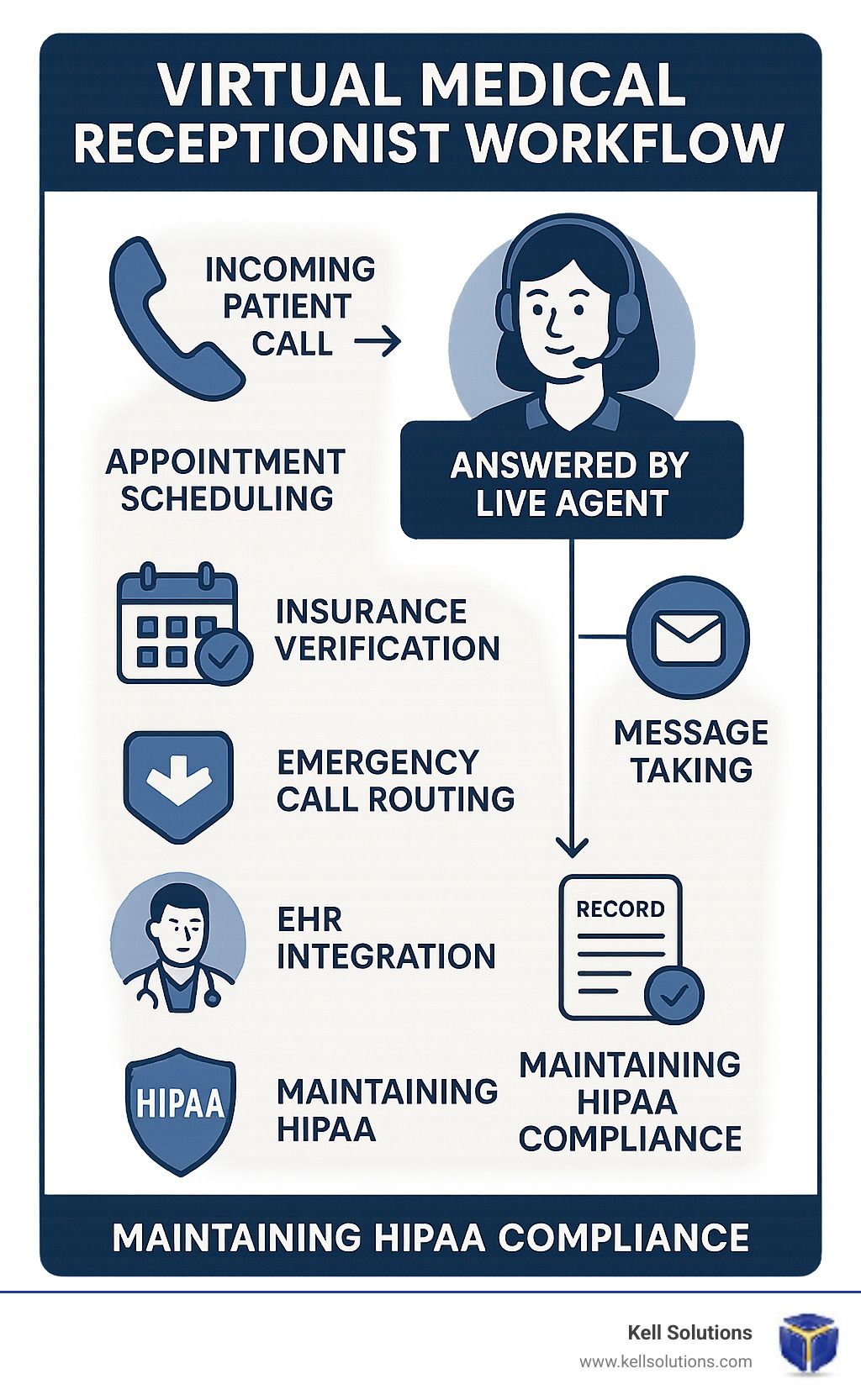
How Virtual Medical Receptionists Work: The Digital Front Desk Explained
Picture this: it's 2 AM and a nervous patient has a question about tomorrow’s procedure. Instead of voicemail, they reach a friendly, HIPAA-trained receptionist who sounds like she’s sitting at your front desk. That is exactly what virtual receptionist services medical practices rely on deliver—an always-on digital front desk.
Behind the scenes, your main number is routed through VoIP to a secure call-handling platform. Simple queries are fielded by AI voice bots; anything clinical or emotional goes straight to a live agent. The system even uses basic sentiment analysis to spot frustration and fast-track those callers to your team. (See AI Receptionist for a deeper dive.)
Virtual Receptionist Services Medical in Action
- Patient dials your practice.
- Call reaches a receptionist within 10 seconds.
- The agent greets the caller by name, pulls up their record, and follows your custom script.
- Routine requests are handled on the spot; urgent issues trigger a warm transfer to clinical staff.
- Every interaction is logged automatically and sent to you via text, email, or EHR note.
Availability
Business hours
24/7/365
Cost
$35–50 K salary + overhead
Predictable monthly fee
Sick Days
Coverage gaps
None
Scalability
Limited by office space
Instant
HIPAA Training
Your responsibility
Included
The result is a seamless caller experience and a front desk that never sleeps.
Virtual Receptionist Services Medical: Key Benefits for Healthcare Practices
Every missed call could be a patient in pain—or a lost opportunity. Virtual receptionists solve that by being available 24/7, reducing no-shows through multi-channel reminders, and capturing new-patient leads before they ring your competitor.
• 24/7 coverage for nights, weekends & holidays
• Up to 60 % fewer no-shows thanks to proactive reminders
• Lead qualification and insurance capture on the first call
• Significant cost savings—many practices trim
$30 K+ in annual overhead
• Elastic staffing that scales instantly during flu season or growth spurts
Faster Scheduling & Inquiry Handling
Because the service writes directly to your practice calendar, patients book in real time—no "phone-tag" loops. Overflow calls during busy times are absorbed automatically, protecting the in-office team.
Revenue & Time Recovery
Most clinics reclaim 10+ staff hours per month and prevent thousands in lost revenue from the 80 % of callers who hang up on voicemail. Even a handful of rescued appointments per week usually offsets the entire subscription cost.
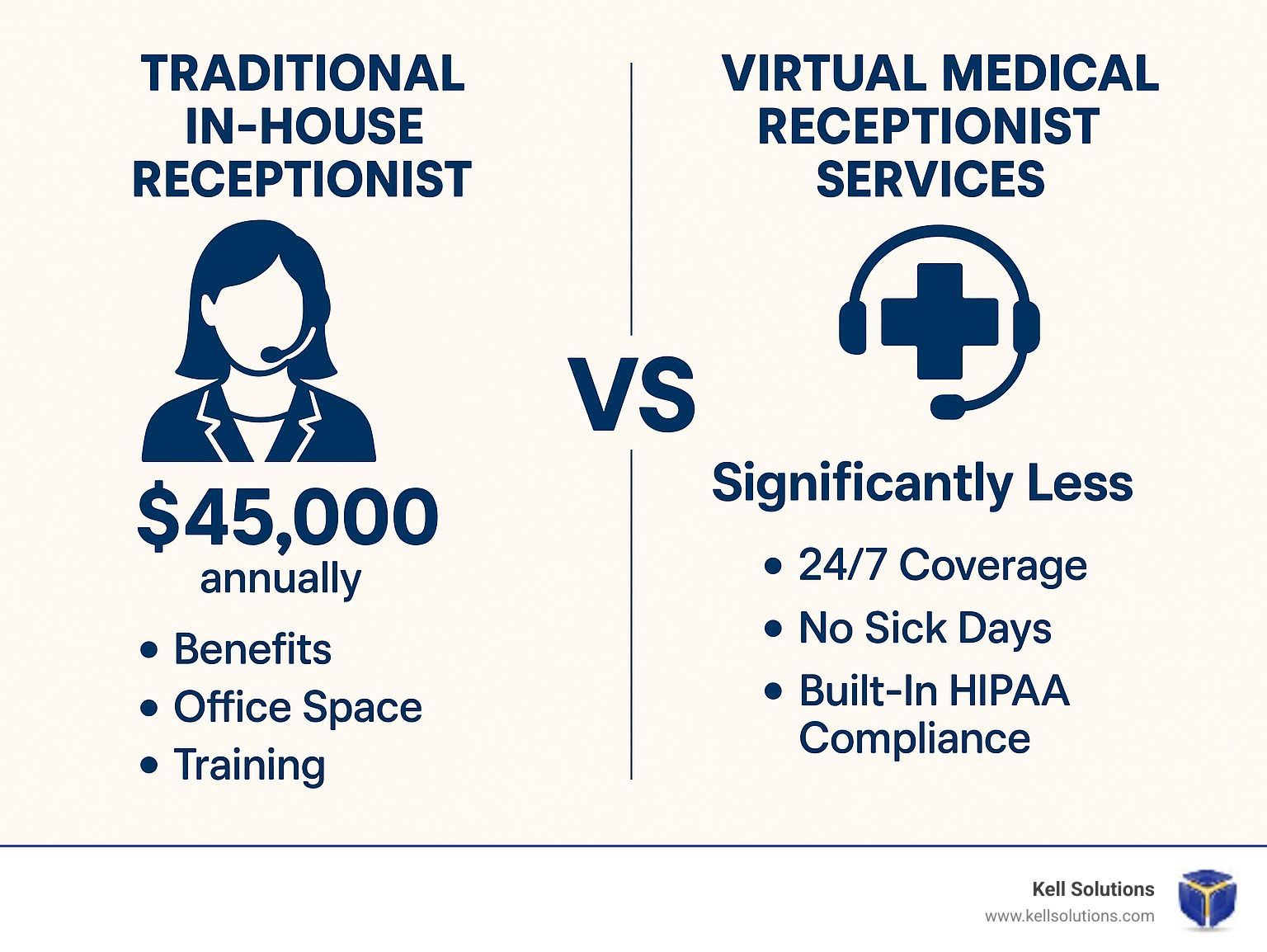
Core Responsibilities That Go Beyond Answering Calls
Virtual receptionists act as an extension of your team, not just a voice on the line.
• Insurance verification before the visit
• Billing Q&A and overdue-payment reminders
• Prescription-refill requests routed for approval
• New-patient intake completed by phone
• English–Spanish bilingual support where needed

After-Hours, Overflow & Emergencies
Custom triage scripts let agents determine whether a call can wait, needs an appointment, or must be patched through to the on-call doctor immediately. During Monday-morning rush or flu spikes, overflow queuing guarantees no busy signals.
Security, Compliance & Seamless Integrations
Healthcare data demands iron-clad protection. Reputable providers build HIPAA compliance into every layer: background-checked staff, end-to-end encryption, and role-based access to your systems.
They plug directly into leading EHRs—Simple Practice, Jane App, Practice Fusion, Athenahealth, Practice Better—so appointments, notes, and call recordings flow automatically, complete with audit trails.
Pricing Models & Scalability
Plans are simple:
• Minutes bundles (good for variable call lengths)
• Per-call packages (good for predictable volume)
• Hybrid options
Setup is typically low cost and completed within a week. Use an ROI calculator to see how just a few extra patients per month make the service pay for itself.
Choosing & Onboarding Your Virtual Medical Receptionist Partner
- Needs assessment – quantify call volume, busiest hours & languages.
- Script writing – craft greetings and escalation rules that match your vibe.
- Training & integration – most practices go live in 5–10 days; multi-site groups may need two weeks.
- Measure success – track answer speed, bookings, and no-show rate.
Must-Have Checklist
– HIPAA compliance & BAA– Medical-terminology fluency– Real-time EHR integration– Bilingual or multilingual agents– Custom emergency protocols– Analytics dashboard for transparency
Sample recordings and a free trial let you verify quality before committing.
Frequently Asked Questions about Virtual Receptionist Services Medical
Healthcare providers considering virtual receptionist services medical practices rely on often have similar concerns about implementation, compliance, and costs. Let me address the three most common questions I hear from practice managers and physicians.
What's the difference between a virtual receptionist and a traditional answering service?
The difference is like comparing a smartphone to an old rotary phone - both technically make calls, but the capabilities are worlds apart. Traditional answering services are basically message-takers. They pick up your calls, jot down basic information, and promise someone will get back to the caller later.
Virtual receptionist services medical practices choose operate more like having an actual receptionist who happens to work remotely. These trained professionals can schedule appointments directly into your practice management system while the patient is still on the line. They verify insurance benefits, handle billing questions, and make real decisions about call routing based on your specific protocols.
Think about it this way: when Mrs. Johnson calls asking to reschedule her appointment because her back pain flared up, a traditional answering service takes a message. A virtual receptionist opens your calendar, finds a better time slot, books the appointment, and sends Mrs. Johnson a confirmation text - all during that single call.
The level of integration makes all the difference. Virtual receptionists have access to your systems and the training to handle complex patient interactions, while traditional services operate with limited information and basic scripts.
How do services stay HIPAA-compliant while integrating with my EHR?
This is probably the most important question you can ask, and the answer involves multiple layers of protection that work together to keep your patients' information secure.
First, reputable virtual receptionist services operate from secure, HIPAA-compliant facilities where staff undergo comprehensive training on patient privacy regulations. This isn't a one-time orientation - it includes regular refresher courses and ongoing compliance monitoring.
The technical side uses enterprise-grade encryption for all communications between virtual receptionists and your practice management systems. These secure connections protect patient information whether it's traveling through appointment scheduling APIs or patient lookup systems.
Access controls ensure virtual receptionists can only see information necessary for their specific tasks. They might be able to view appointment availability and basic patient contact information, but they can't access detailed medical records or sensitive clinical notes.
Everything gets logged and tracked for audit purposes. Every call, every appointment scheduled, every piece of information accessed creates a digital trail that helps ensure compliance and provides accountability.
Most importantly, reputable services provide Business Associate Agreements (BAAs) that formally establish compliance responsibilities. This legal framework ensures your practice remains protected under HIPAA regulations while benefiting from virtual reception services.
What does onboarding typically cost and how long does it take?
The good news is that most virtual receptionist services have streamlined their onboarding process to get you up and running quickly without breaking the bank.
Timeline-wise, standard implementations usually take 2-5 business days from contract signing to taking your first calls. If you have a straightforward setup with common practice management software and standard procedures, you could be live by the end of the week.
More complex practices - think multiple locations, specialized workflows, or extensive EHR customizations - might need 1-2 weeks for complete implementation. The extra time ensures everything works smoothly and your virtual receptionists understand your unique procedures.
Cost considerations vary significantly between providers. Many services include onboarding as part of their monthly fees, recognizing that proper setup benefits everyone involved. Others charge one-time implementation fees that cover system integration, staff training, and initial script development.
The investment in proper onboarding pays dividends through smoother operations and better patient experiences from day one. When your virtual reception team understands your specific procedures and integrates seamlessly with your existing systems, you'll see optimal performance and return on investment much faster.
The goal isn't just to get the service working - it's to get it working perfectly for your practice's unique needs and patient population.
Conclusion
Virtual medical receptionists close the gap between patient expectations and a busy front desk. By answering every call, cutting no-shows, and integrating directly with your systems, they free clinicians to focus on care while boosting revenue.
Kell Solutions’ VoiceGenie AI blends compassionate live agents with smart automation—HIPAA-secure, affordable, and ready to scale as you grow.
Ready to experience it? Request a free demo and see how easy a 24/7 digital front desk can be.
📚 About the Author Gregg Kell is a seasoned digital marketing strategist and founder of Kell Web Solutions, Inc., helping professional service firms grow through innovative AI-powered solutions like VoiceGenie AI. With over 20 years of experience in web development, lead generation, and business automation, Gregg is passionate about helping small businesses maximize growth and profitability through cutting-edge technologies.
When he's not helping businesses boost their bottom line, Gregg enjoys life by the beach in Laguna Beach, California, with his wife Debbie, celebrating over 40 years of marriage and entrepreneurial trips.
👉 Explore More from Gregg:


Orange County HVAC Google AI Overview Domination: 7 Proven Strategies to Capture Featured AI Results





